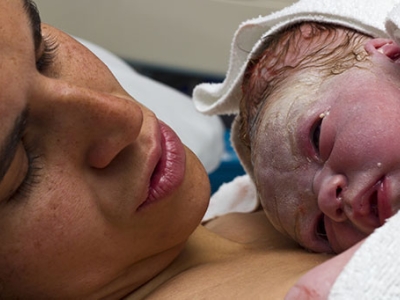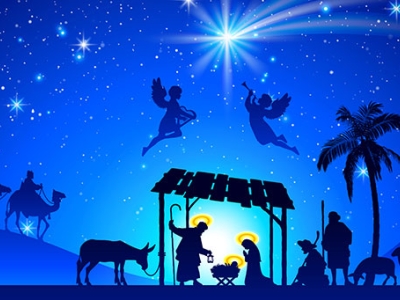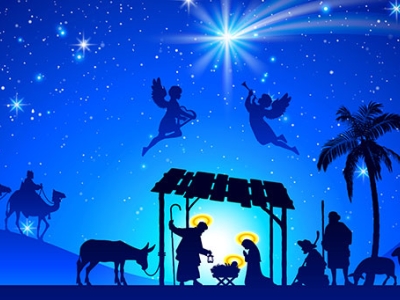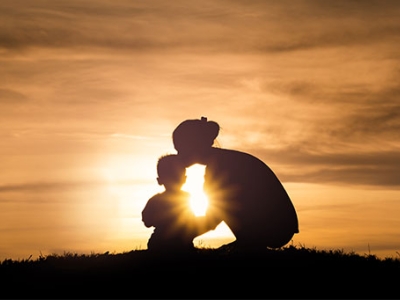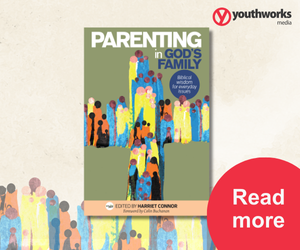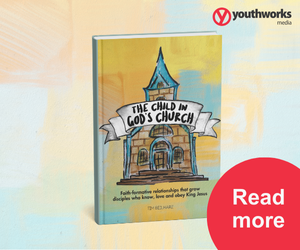
Nativity Notes: Did Mary give birth in a home?
Jesus' birth may not have been as isolated and lonely as we think.
As I think about the Christmas story as a mother, my heart always goes out to Mary—exhausted from a long, uncomfortable journey; having to give birth for the first time in a strange town, with no-one beside her except her tired and probably bewildered young husband … and some animals. According to the traditional Nativity play, the couple had knocked on the door of every inn in town, until finally, one inn-keeper took pity on them and let them stay in his stable out the back.
Mary (probably) felt nervous
I’m sure Mary would have been feeling nervous about the birth. She knew what the angel Gabriel had promised:
‘You will conceive and give birth to a son, and you are to call him Jesus. He will be great and will be called the Son of the Most High. The Lord God will give him the throne of his father David, and he will reign over Jacob’s descendants forever; his kingdom will never end.’ (Luke 1:31–33)
And yet she also knew that giving birth had always been a dangerous affair, ever since God had told Eve:
‘I will make your pains in childbearing very severe;
with painful labour you will give birth to children.’ (Genesis 3:16)
In fact, on the way to Bethlehem, Mary may well have passed by the tomb of Rachel, Jacob’s beloved wife, who had died after giving birth to their second son, Benjamin (Genesis 35:16–20).
Mary (probably) gave birth in a home
Although Mary was doubtless daunted at the prospect of giving birth, the birth may not have been as isolated and lonely as our Nativity plays and Christmas cards would have us believe.
You see, it all hangs on one Greek word in the phrase: ‘there was no place for them in the kataluma’ (Luke 2:7, ESV). This word can mean inn, a ‘guest house’. However, elsewhere in the Gospel of Luke (22:11), this word is translated as ‘guest room’.
Since Joseph and Mary were both from the line of David and all the members of that clan were travelling to Bethlehem for the Census, it is quite likely that they had relatives there to stay with.
Houses of that time typically had a ground floor living area, an upper room for guests and a lower floor or cave below ground for the family’s animals to sleep in. So, when Mary and Joseph arrived, there was no room in the guest room—it already had visitors in it—so they were given a place to stay downstairs with the family’s animals. In all likelihood, Mary gave birth in a house, albeit in the area where the animals slept (hence the ‘manger’ for baby Jesus to sleep in).
There’s a lovely children’s story by Andrew McDonough called Bethlehem Town, which tries to explain this all to children. This illustration shows what houses in that region looked like:
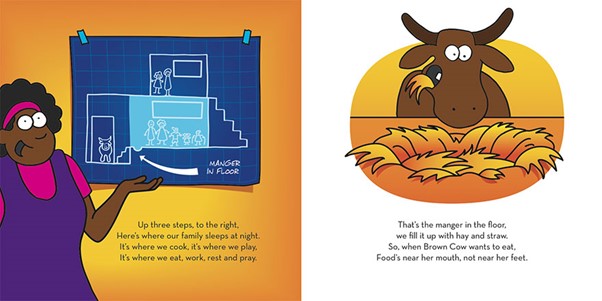
Image courtesy of Lost Sheep Books.
Mary (probably) had relatives around her
All of this means that when the time came for Mary to give birth, it is likely that she had a whole house full of relatives to support her. Andrew McDonough puts it like this:
‘It’s OK, Mary, when it comes to babies,
you’re in the hands of the Bethlehem ladies.
We’ll stay here, we’ll help you through,
baby’s safe and so are you.
It’s OK, Mary, when it comes to birth,
Bethlehem women are the best on earth.’
In response to this, Jodie McIver, midwife and author of Bringing Forth Life: God’s Purposes in Pregnancy and Birth said: ‘I do hope that was the case. Everyone needs the Bethlehem ladies! Research shows that when a woman has continuous practical and emotional support from another person during labour and birth it can greatly improve her experience'.
Giving birth to the Lord of Life
Like every mother since Eve, Mary gave birth in this fallen world, where death casts its long dark shadow over us and our children. By God’s grace (and perhaps with the help of the ‘Bethlehem ladies’), Mary and her baby came through the dangers of birth. But one day, Mary would have to stand and watch her beloved son die before her eyes—something no mother wants to face. And yet Jesus’ sacrificial death for sin would destroy the power of death and open the gates of eternal life forever. Mary herself came to believe that Jesus was the promised ‘seed of Eve’ who crushed Satan’s head, even as Satan struck his heel (Genesis 3:15).
Reflecting on Mary’s experiences can give us new opportunities and reasons to give praise to Jesus, whose birth as a baby and death as a man would bring us new birth and eternal life. Hannah Anderson writes:
‘In the wisdom of God, the child [Mary] gives birth to will reverse the very thing that threatens her. In the wisdom of God, childbirth would become one of the ways that we understand the Promised Son’s work in the world and within us. In the wisdom of God, we will be reborn through faith in him’ (Heaven and Nature Sing, p 55).
The poet Luci Shaw offers another perspective, expressing what all of this might have been like for the new mother Mary in final lines of her poem, Mary’s Song:
‘Older than eternity, now he
is new. Now native to earth as I am, nailed
to my poor planet, caught that I might be free,
blind in my womb to know my darkness ended,
brought to this birth
for me to be new-born,
and for him to see me mended
I must see him torn.’
References
Christmas: How the Gift Was Given by Andrew Drury (DayOne Publications, 2017), pages 130–133.
Heaven and Nature Sing: 25 Advent Reflections to Bring Joy to the World by Hannah Anderson (B&H Publishing, 2022), pages 53–63.
Undeceptions Podcast, ‘First Noel’.
‘Mary’s Song’ by Luci Shaw in Accompanied by Angels: Poems of the Incarnation (Wm. B. Eerdmans Publishing, 2006), p29.
---
Harriet Connor is the Content Editor for Growing Faith and the author of Families in God's Plan: 12 Foundational Bible Studies and Big Picture Parents: Ancient Wisdom for Modern Life (Wipf and Stock, 2017). She lives on the Central Coast of NSW with her husband and four sons.
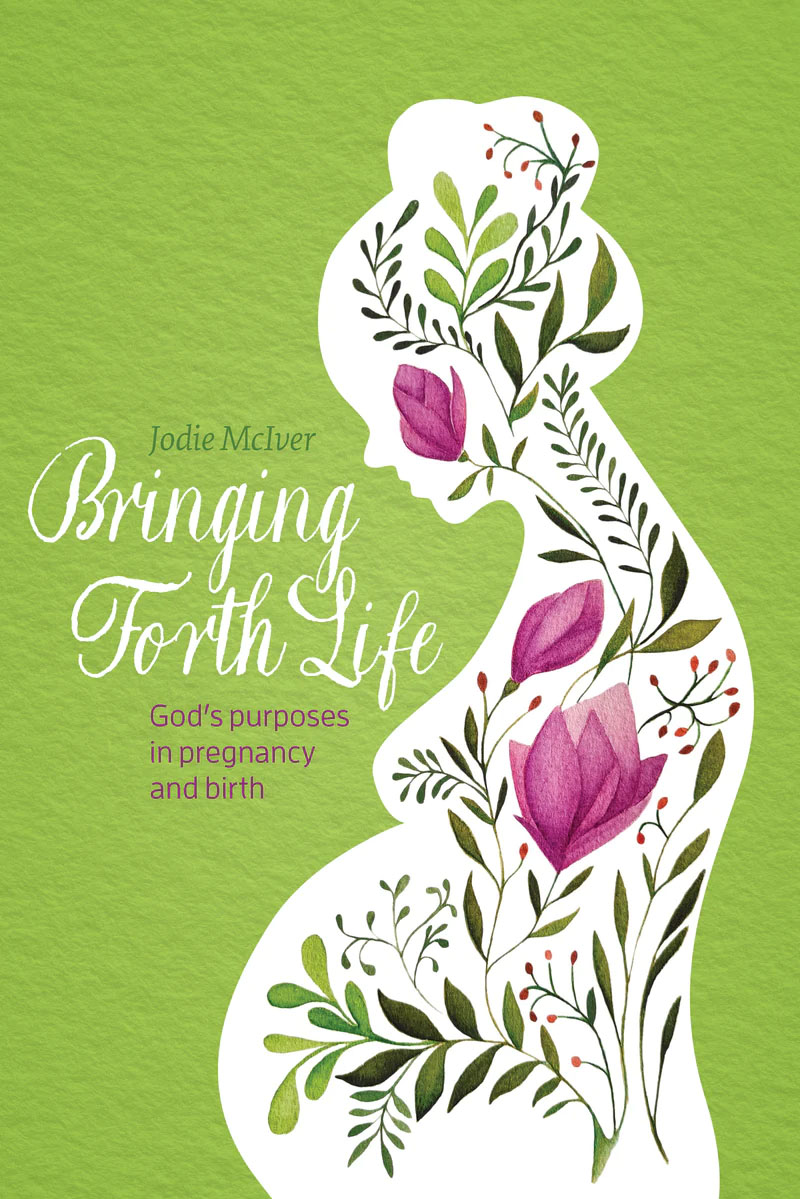
Bringing Forth Life
'Bringing Forth Life' goes beyond standard birth books as it leans on the wisdom of the ultimate life-giver to reveal the wonder and purpose of pregnancy.
For more articles from Growing Faith, subscribe to our monthly e-newsletter.
To hear about the latest books and resources from Youthworks Media, subscribe here.


